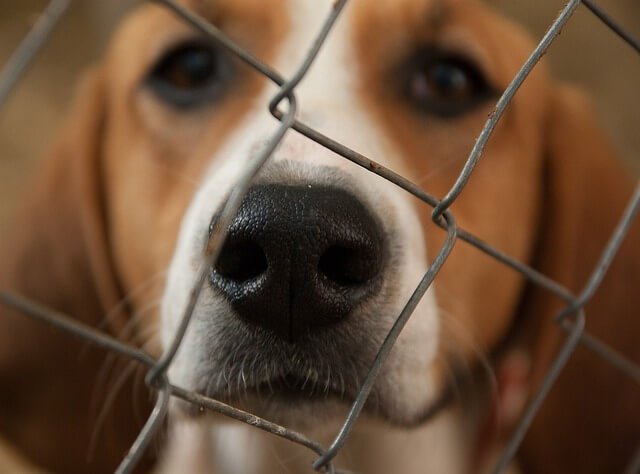Beagles are one of the breeds of choice when it comes to laboratory use, and hold a significant position in the world of animal testing. Despite being loyal and friendly family pets, they have a dark history and are often subjected to cruel and inhumane testing procedures. This raises a controversial question – why are beagles used in labs?
The Purpose of Using Beagles in Labs
Beagles are preferred test subjects due to their size, gentleness, and calm nature. They are often used in the study of animal physiology, toxicology, and pharmacology, as well as in the development of veterinary drugs and vaccines.
Their anatomy is similar to that of humans, making them an ideal species for pre-clinical research. They are generally healthy, and their lifespan and reproductive cycles mimic those of humans. As a result, scientists can test potential cures and treatments with a reliable model for the human body.
Moreover, beagles have a trustful temperament. They are known for their loyalty, gentleness, and trainability. Therefore, they are less likely to become agitated or resist procedures, making them an easy and cooperative species to work with in the lab.
However, the use of beagles in laboratories has sparked public scrutiny and outrage due to the inhumane treatment they receive.
The Cruelty of Beagle Testing
Beagles are subjected to various tests that are often painful and traumatic. These tests include force-feeding, electrocution, radiation, and surgical procedures that require them to be immobilized for several hours. They are also deprived of basic necessities such as food, water, and sleep to induce stress and increase test results.
Moreover, it’s essential to note that laboratory beagles are bred specifically for medical testing, indicating that they never get to experience a normal life outside the confines of a sterile lab. They are raised in small cages without access to the outdoors or companionship. As a result, they suffer from depression, anxiety, and other psychological disorders.
The Beagle Freedom Project has been at the forefront of advocating for the release of laboratory beagles and for the abandonment of animal testing. Their efforts have resulted in the rescue and rehoming of thousands of laboratory beagles.
Alternatives to Beagle Testing
Animal advocacy groups are campaigning for the use of alternative methods in place of animal testing. These methods include in vitro testing, microdosing, and computer modeling, among others.
In vitro methods use cell cultures and tissues to examine the effects of drugs and chemicals, avoiding the use of live animals entirely. Microdosing, on the other hand, involves administering small doses of drugs to humans, with further examination of blood and urine to determine efficacy and potential side effects.
Computer modeling uses artificial intelligence and computer software to simulate the effects of drugs without the need for animal testing. These methods have been proven to be more effective and efficient, with results delivering higher accuracy rates than animal testing.
Common FAQ
What do they use beagles for testing?
Aside from toxicity and safety testing, biomedical laboratories also employ beagles in various other research areas such as cardiovascular and pulmonary studies, cancer research, and testing of prosthetic devices. Despite the availability of viable alternatives, certain veterinary and medical schools still use beagles for research purposes. This practice has garnered controversy in recent years due to ethical concerns over the use of animals in scientific experiments.
How do you stop animal testing?
You can contribute to the fight against animal testing in various ways. We can make donations to organizations that support the cause. Additionally, you can make a conscious effort to only purchase cruelty-free products, including household items. To help identify such products, look for the “Leaping Bunny” logo, which signifies a cruelty-free certification. You can also make your household products as an alternative to those tested on animals. Consider boycotting companies that use animal research to encourage ethical business practices. Another option is to donate your body to science as a humane alternative to animal testing. Finally, you can spread awareness and educate others about the issues surrounding animal testing and the importance of cruelty-free alternatives.
Conclusion
When people ask me – “why are beagles used in labs?” I answer that beagles are ideal laboratory animals due to their physiological similarities to humans, their use is undoubtedly cruel. It’s a well-known fact that these animals suffer from inhumane treatment in the name of medical progress. Animal advocacy groups and scientists are pushing for the use of alternative testing methods and the abandonment of animal testing altogether.
It’s time I recognized that animal testing could be replaced with modern, more effective procedures that are equally successful in drug testing, with insignificant harm or discomfort inflicted on innocent creatures. It’s up to us to ensure we move towards a more ethical and compassionate approach to testing. Perhaps someday, we can pave the way to a cruelty-free future for all living creatures.

